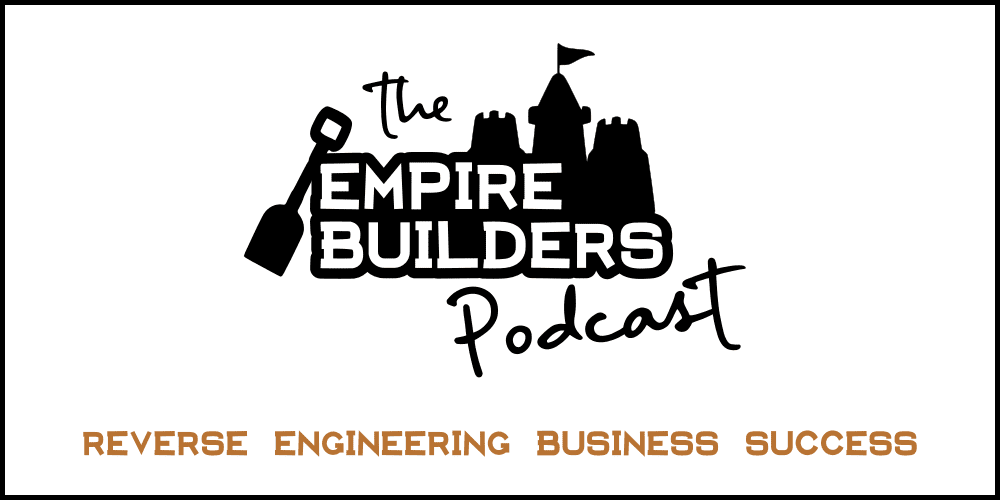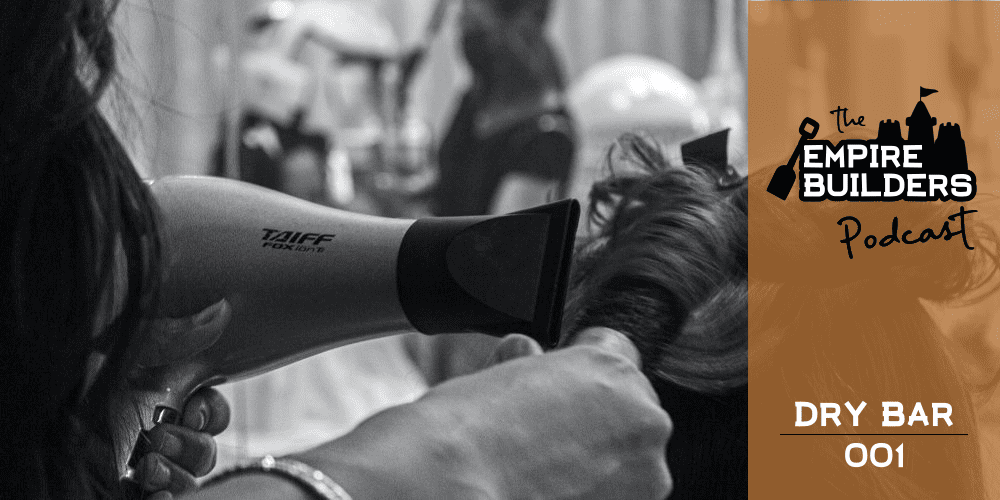There is only one reason to stop in Creemore on your way north or south, Creemore Springs Brewery and their Lager how John Wiggins transformed his town of Creemore.
Dave Young:
Welcome to the Empire Builders Podcast, teaching business owners the not-so-secret techniques that took famous businesses from mom and pop to major brands. Stephen Semple is a marketing consultant, story collector, and storyteller. I’m Stephen’s sidekick and business partner, Dave Young. Before we get into today’s episode, a word from our sponsor, which is, well, it’s us, but we’re highlighting ads we’ve written and produced for our clients. So here’s one of those.
[Tappers Ad]
Dave Young:
Stephen Semple and Dave Young here. Stephen, you’re in Ontario, Canada, and I’m in Austin, Texas. And of course, today we’re going to be talking about Canadian beer, eh?
Stephen Semple:
That’s right. How’s it going, eh?
Dave Young:
Hey, ya Hoosier. You mentioned that we’re going to be talking about Creemore Brewery.
Stephen Semple:
Yeah.
Dave Young:
And this is one that’s unfamiliar to me. I mean, when I was in college, we liked Canadian beer. A lot of my friends and I drank a lot of Labatts Blue and Molson in those little barrel-shaped bottles or cans or whatever it was. This one didn’t start till after I was even gone from there. So Creemore Brewery, what’s the deal?
Stephen Semple:
Yeah. And it’s actually called Creemore Springs Brewery. So if you’re wanting to Google it, it’s Creemore Springs, C-R-E-E-M-O-R-E Springs brewery. And they are now part of Molson’s Brewery. Molsons bought them back in 2005, and they were a private company, so we don’t exactly know what they were sold for, but industry sources sort of think the number was around $25 million. And given that they started in 1987 and then were sold in 2005 for $25 million, that’s not a bad little return on investment
Dave Young:
That ain’t a bad run for some people that just like to make beer.
Stephen Semple:
That’s right. It was started by a guy by the name of John Wiggins, and John Wiggins fell in love with this little community called Creemore. And here’s what I got to explain. So I live in Collingwood, which is two hours north of Toronto. And if you were driving from Toronto to Collingwood, the quote unquote highway that you drive on is a twisty, turny, two lane road, right?
Dave Young:
Okay.
Stephen Semple:
Creemore is off of that road. It’s not even on that so-called highway. It is off of that so-called highway, about 20 minutes south of me. It’s this little tiny village that really, frankly, no one knew was there. And John had a ski chalet not too far away from Creemore and fell in love with the little village. And at the time, he was a graphic designer, and he decided that anyone in town he would do a design for, for free. And it’s really cool, because when you’re in Creemore today, you still see a bunch of his work, and it was really spectacular and gave the village a nice little feel.
Dave Young:
Nice.
Stephen Semple:
Then in the mid eighties, he came down with very serious arthritis and couldn’t do design work any longer, but he still wanted to do something. And his buddy was a master brewer. “Hey, let’s start making beer.” So they took over a warehouse in town and decided to turn it into a brewery out in the middle of fricking nowhere, an hour and a half north of Toronto, in 1987, when craft beer was really not a thing yet.
Dave Young:
Right. In 1987, you start a beer company, you’re going up against the big boys.
Stephen Semple:
You’re going up against the big boys. And even the few craft brewers that were around, quite frankly, weren’t making great product. And at the time in Ontario, beer distribution was very restrictive, and so they had a lot of challenges ahead of them. So what they did was they started this radio campaign. They did a radio campaign talking about Creemore. But you know how we’ve talked in the past about this whole idea of romanticizing an idea?
Dave Young:
Mm-hmm (affirmative).
Stephen Semple:
Like trying to bring a romantic feel to it rather than educating people? They could have done what most breweries would do and say, “We’ve got this great quality product that’s brewed with this really nice spring water,” right? That’s what most people would do.
Dave Young:
Sure. Yeah.
Stephen Semple:
Well, they stumbled across this really interesting idea, and that was the Bavarian Purity Act of 1516. And the Bavarian Purity Act was passed on April 23rd, 1516 by the Duke of Bavaria, William the IV.
Dave Young:
Okay.
Stephen Semple:
And he set out this law which regulated the purity of ingredients allowed to be in beer sold within the kingdom of Bavaria. And the only ingredients allowed were barley, hops, water, and of course today, yeast.
Dave Young:
Yeah. They had yeast in it, they just didn’t know it then.
Stephen Semple:
Basically. It wasn’t until 1857 that they discovered, oh my God, there’s this yeast in there. They were brewing beer to this standard of no preservatives, pasteurization, and none of this stuff going on. But instead of saying, hey, we’re doing it without these things, what they chose to do was run these ads talking about we brew our beer to the Bavarian Purity Act of 1516.
Dave Young:
Right. All the other beer companies ignore the Bavarian Purity Act.
Stephen Semple:
Purity Act of 1516. But it gave it this romantic feel, right?
Dave Young:
Sure. Yeah.
Stephen Semple:
That we’re brewing beer to that standard, and everybody recognized German beer as being really good, right?
Dave Young:
Yeah. This is old-school standard fair, right?
Stephen Semple:
Even if somebody else was brewing to that standard, they owned it because they were the first to talk about it.
Dave Young:
At that point, everybody else is a me too.
Stephen Semple:
Everybody else is a me-too at that point. This is a game that, if we go back to the early twenties, was done by Strohs. Strohs was a really tiny brewery, and they decided to run these ads talking about how they cleaned the bottles, the standard that they went to in terms of washing the bottles. If you wash the bottles to that standard, imagine the care you take brewing the beer, and it launched Strohs into a major brand, this campaign. And the funny thing is, it was the standard. Everybody washed the bottles out.
Dave Young:
Well, you’d hope so, right? Be like Chevy saying we put breaks on our cars.
Stephen Semple:
Yeah. Well exactly.
Dave Young:
Stay tuned. We’re going to wrap up this story and tell you how to apply this lesson to your business right after this.
[Empire Builders Ad]

Dave Young:
Let’s pick up our story where we left off, and trust me, you haven’t missed a thing.
Stephen Semple:
Creemore did campaigns around this Bavarian Purity Act and talking about the Duke of Bavaria, but then they also ran ads talking about the village of Creemore and this little tiny village that no one knew existed, and the things going on in Creemore and how quaint Creemore is. It gave it this very quaint quality sort of feel to the point where today, Creemore is a bustling little village where there’s all sorts of cafes and art galleries and all this other stuff because people started traveling to Creemore to visit the brewery to do tastings and whatnot. And Creemore even were in a slightly different bottle, and they would talk about why it was in this type of bottle. But again, it was all of this stuff where they really leaned into romanticizing it.
Dave Young:
Yeah. I love it. I love it.
Stephen Semple:
Yeah.
Dave Young:
There’s probably a book to be written on brewering and fermenting and distilling tourism and its impact. Our sort of shirttail cousins at the Crowded Barrel Distillery, I see it every day on campus here in Austin, is people travel from a long ways just to come sit in the Creemore Springs brewery and taste the product that they’ve been following on YouTube and wherever, and so it has a big effect. And breweries have their own followings and they go from one to another. And so that’s awesome that he kind of put Creemore on the map in a way, huh?
Stephen Semple:
Well, he very much actually did put Creemore on the map. And it’s also really interesting how tourism and breweries and distilleries and all those things go together because a number of years ago when I was in Nashville, when we were at the partner meeting in Nashville, I took extra time and did a whole bunch of bourbon tours, right? Was down in that area, and so made it a bit of a vacation. But it can also be a strategy on the flip side if you’re a brewery.
Stephen Semple:
So for example, the town that I live in is a tourist destination. We get about three and a half million tourists a year. There was a brewery that recently moved from another place, they were in Guelph, and decided to move to Collingwood because part of their strategy was, we’re going to open this brewery, we’re going to open a big restaurant, people come to this town, what do they want to do? They want to sample the local beers. Well guess what? This is a way of exposing our beer to a larger population by locating in something that was already a tourist destination. So it can actually cut both ways. So the whole thing you hear is, is if you’ve got something that you want to really tell the consumer about the quality of your product or the quality of your ingredients, what you want to try to do is make it a romantic, interesting story, like, they came across this Bavarian Purity Act and hung on that. And then being in the town of Creemore, they would just talk about the quaintness of the town of Creemore, which immediately translated into their product.
Dave Young:
Sure. I love it.
Stephen Semple:
And then they became big enough and prominent enough that Molsons came along and wrote them a big fat check, and the rest was all history.
Dave Young:
Thanks for listening to the podcast. Please share us. Subscribe on your favorite podcast app, and leave us a big fat juicy five star rating and review. And if you have any questions about this or any other podcast episode, email to [email protected].






